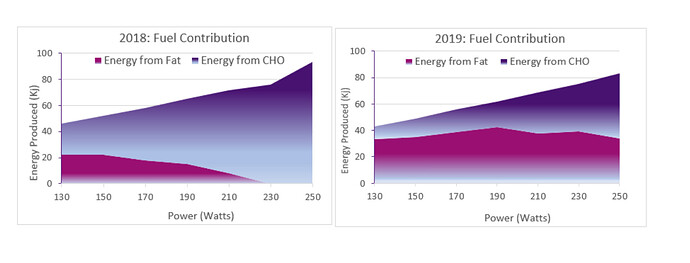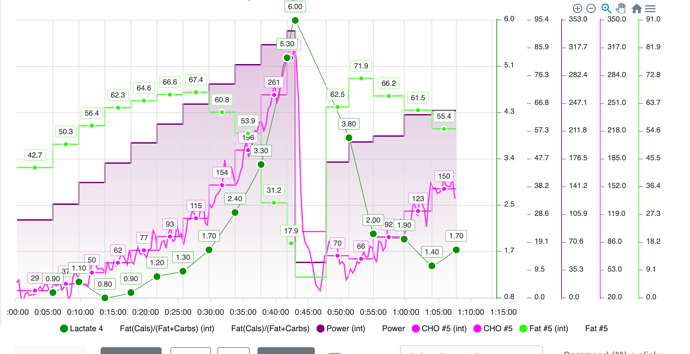done - hopefully this is the ride shot but can send a fit file if thats better?
Just listened to the podcast, really interesting, and bit on protein at the end and the palm method was an easy way to understand it. Anyway, since it’s mild enough to ride outdoors in England, today I tried a bit of this outdoors.
On one of my regular loops I used the first 20 mins as my usual getting up to operating temperature mode. Then I hit the first hill and rather than HR cap at LT1 HR, I moved the cap up to the 82%. Then at the top I allowed HR to drop a bit and hold it around 78-80%
My 75 min ride came out with 45 mins below LT1 and 30 mins between LT1 HR and 82% max HR. Not quite 3 x 20 min but an interesting introduction. It was also interesting getting a feel for RPE when I hold it in that range, it felt comfortable for the time I did it.
I think this would be an interesting and productive way to progress my aerobic base when I’ve maxed my hours or I can’t do as many hours in a week as I’ve got used to.
Tomorrow I’m off on an approx 4-4.5 hour ride below LT1 but I might add some low tempo efforts once on traffic free sections where I think a solid 20 mins can be held without interruption.
Yesterday’s ride was 4 hours 11 mins. 3 hours 12 mins of the ride was below LT1 and 59 mins in the low tempo with cap of 82% used here. Enjoyed that.
How can we gauge if our fatmax zone is actually improving with this style of training? It was my understanding that an individuals fatmax doesn’t necessarily move in line with the lactate thresholds so if you see improvements in your LT1 with this tempo training is it possible that your fatmax has not changed? Especially if it’s recruiting predominantly carbohydrates. Unfortunately I am already utilising 50% carbs even in zone 2.
Are there physiological markers for the fatmax zone?
@Hank_Reckless How did you conclude your are using 50% carbs in zone 2?
Your progress will show from the power output in the same heart rate zone. The heart rate zone should be representative for predominantly fat utilisation / oxidative fibers.
Fat Max will always be tied very closely to LT1, but may not improve in everyone.
First this is how I define these metrics myself.
In the picture below, you will see ACTUAL fatmax is just after LT1.
I like to score fatmax as the highest amount of fat with the least amount of carbs, this spot is much easier to find in a test. You can not this by the sudden increase in carbs at fat max (keep in mind this is only during 4m of a step test, so in longer sessions, this is another reason I use the number I do).
You can also see that the lactate curve near LT1 and the Carb curve have an identical reaction.
So for me, fatmax tied by the pretty closely to LT1.
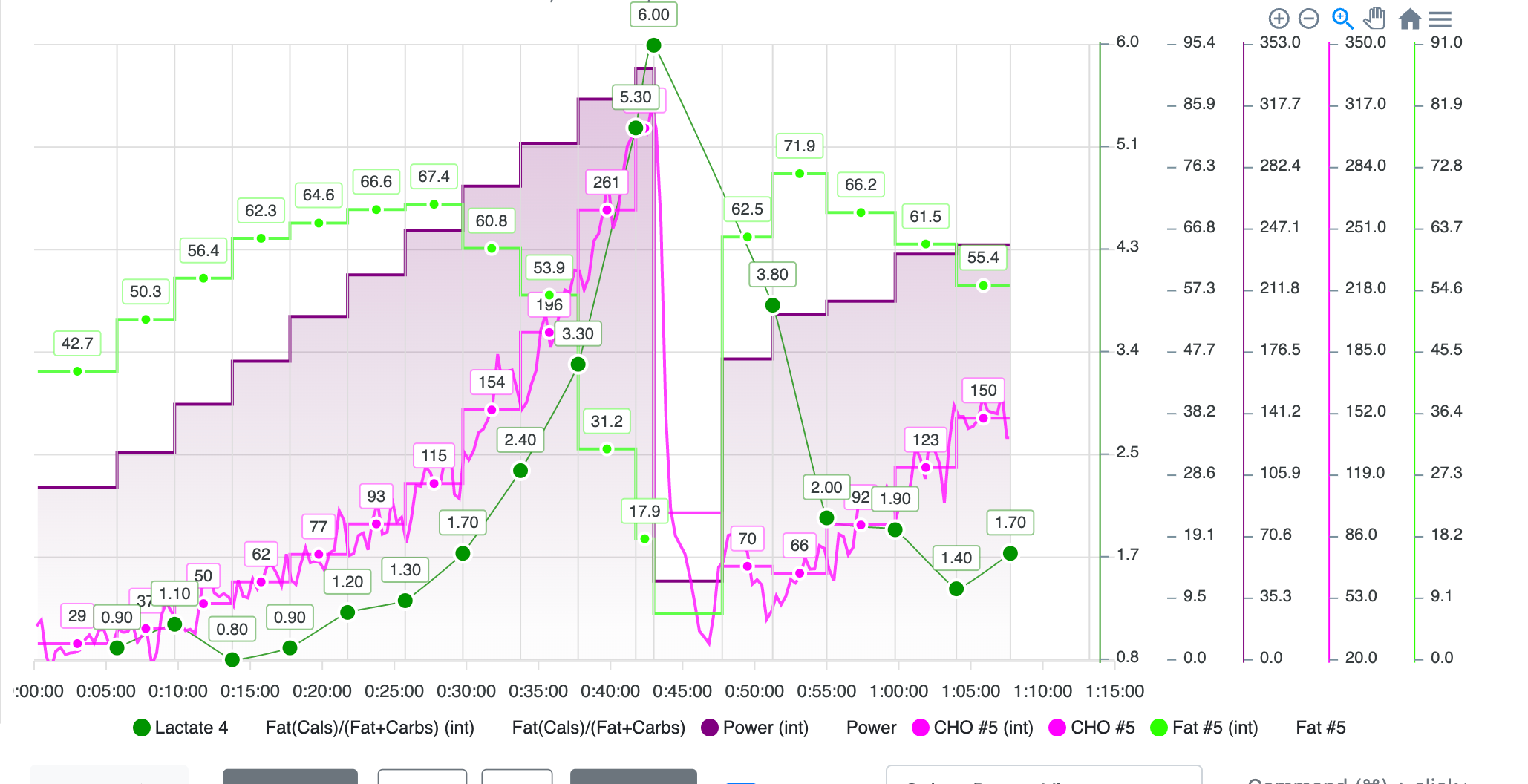
Below same pic with arrow at fatmax ceiling.
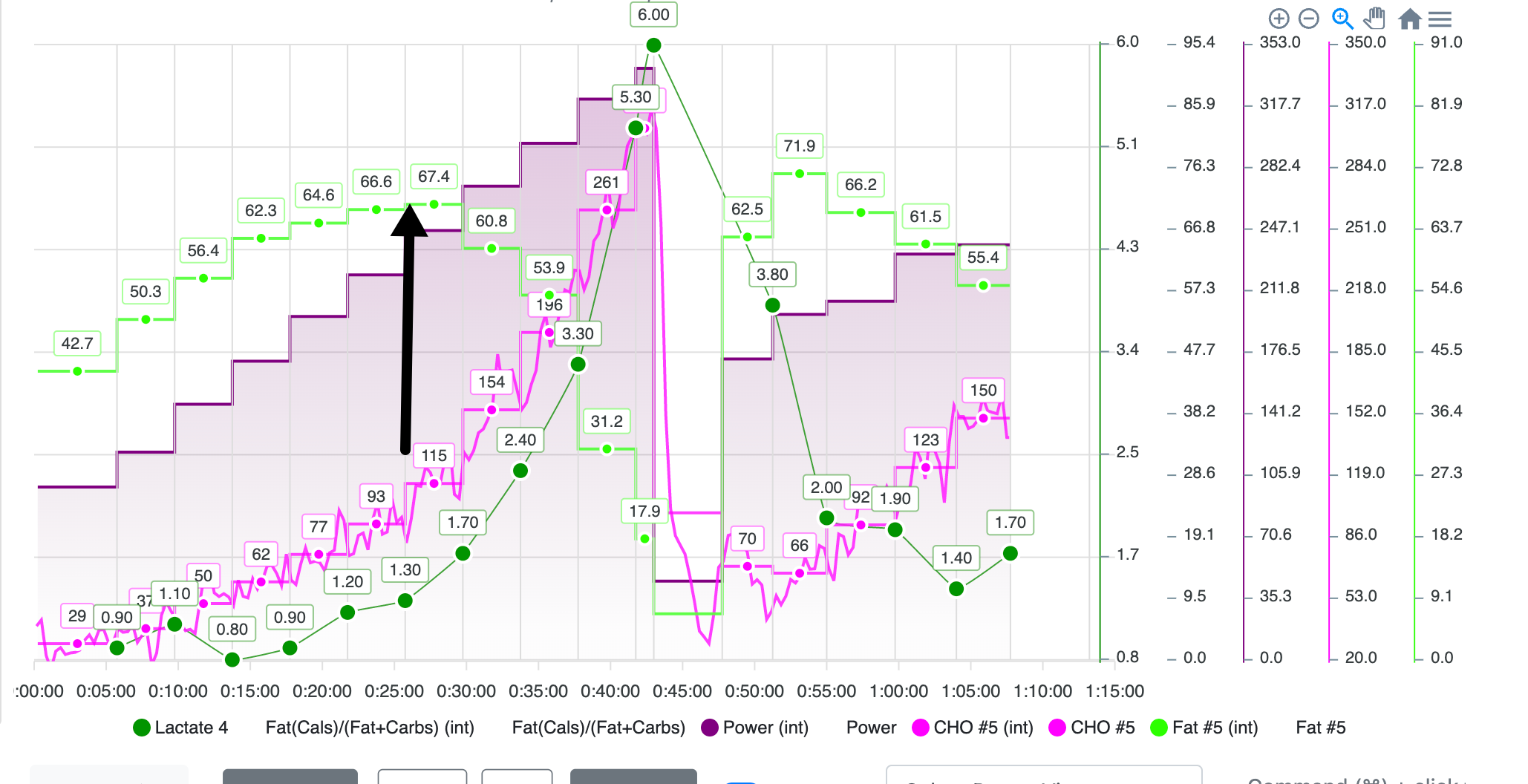
So what change is the % ratio of CHO and FAT, and as you utilize fat longer, this would be the flattening of the lactate curve after LT1 (less carb contribution after LT1 would be mean lower lactate measurements)
So below is the same athlete looking at FAT and CHO ratio out of 100%.
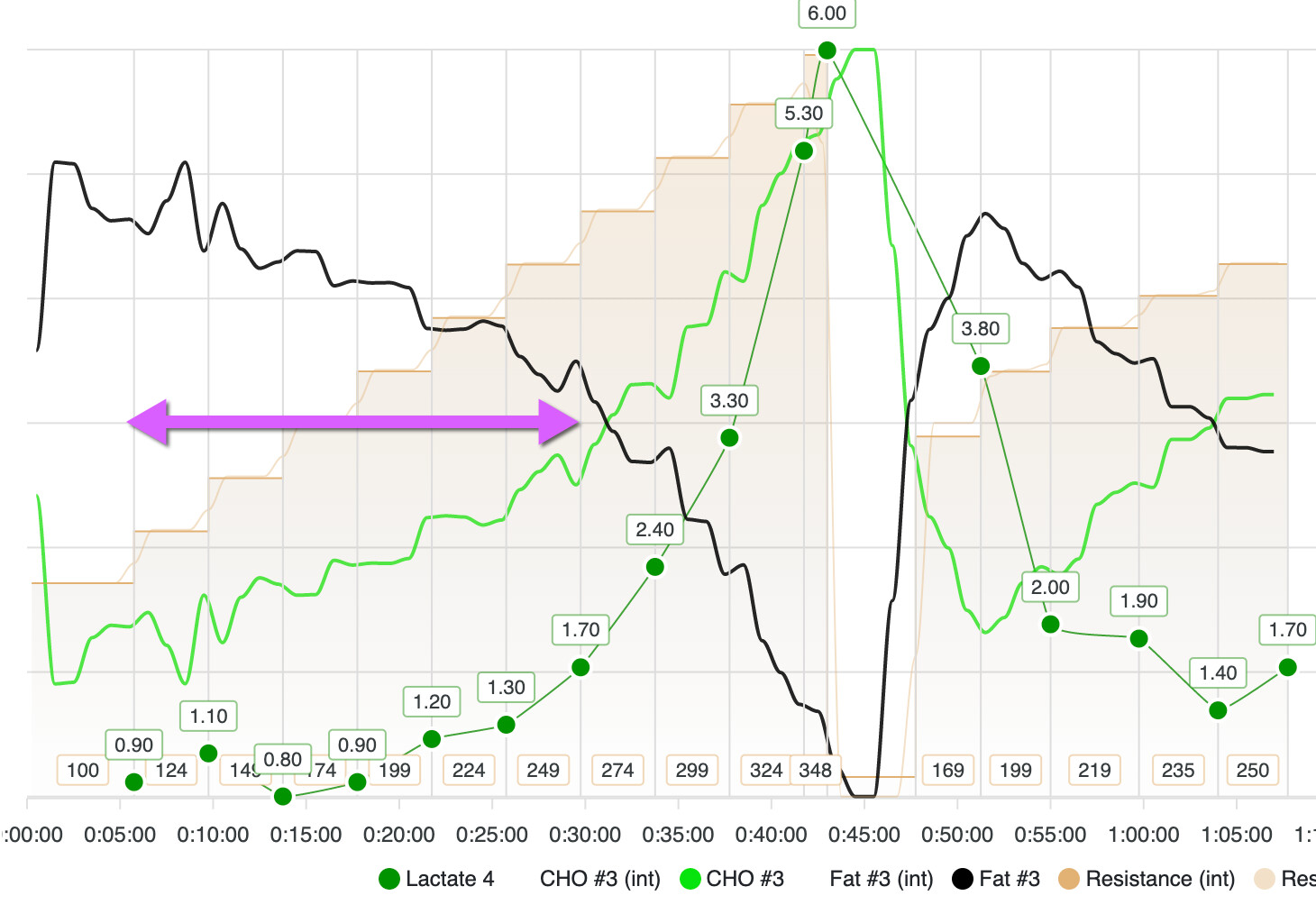
In an athlete with fat cho crossover to to the left, the lactates would be higher do to sooner fat cho crossover.
Below is an example of fat cho / near fat cho crossover, lower levels.
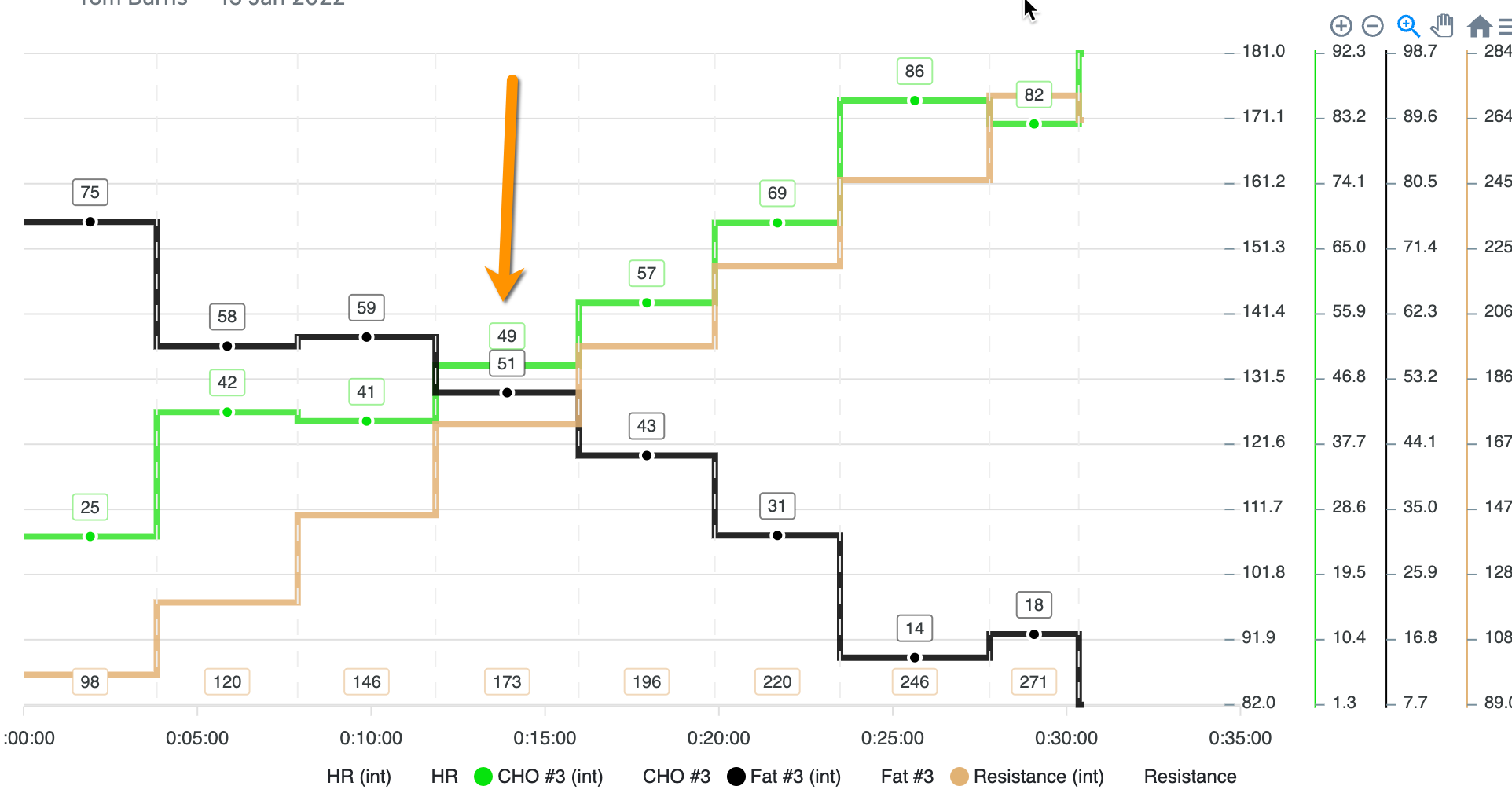
Fat Max same athlete
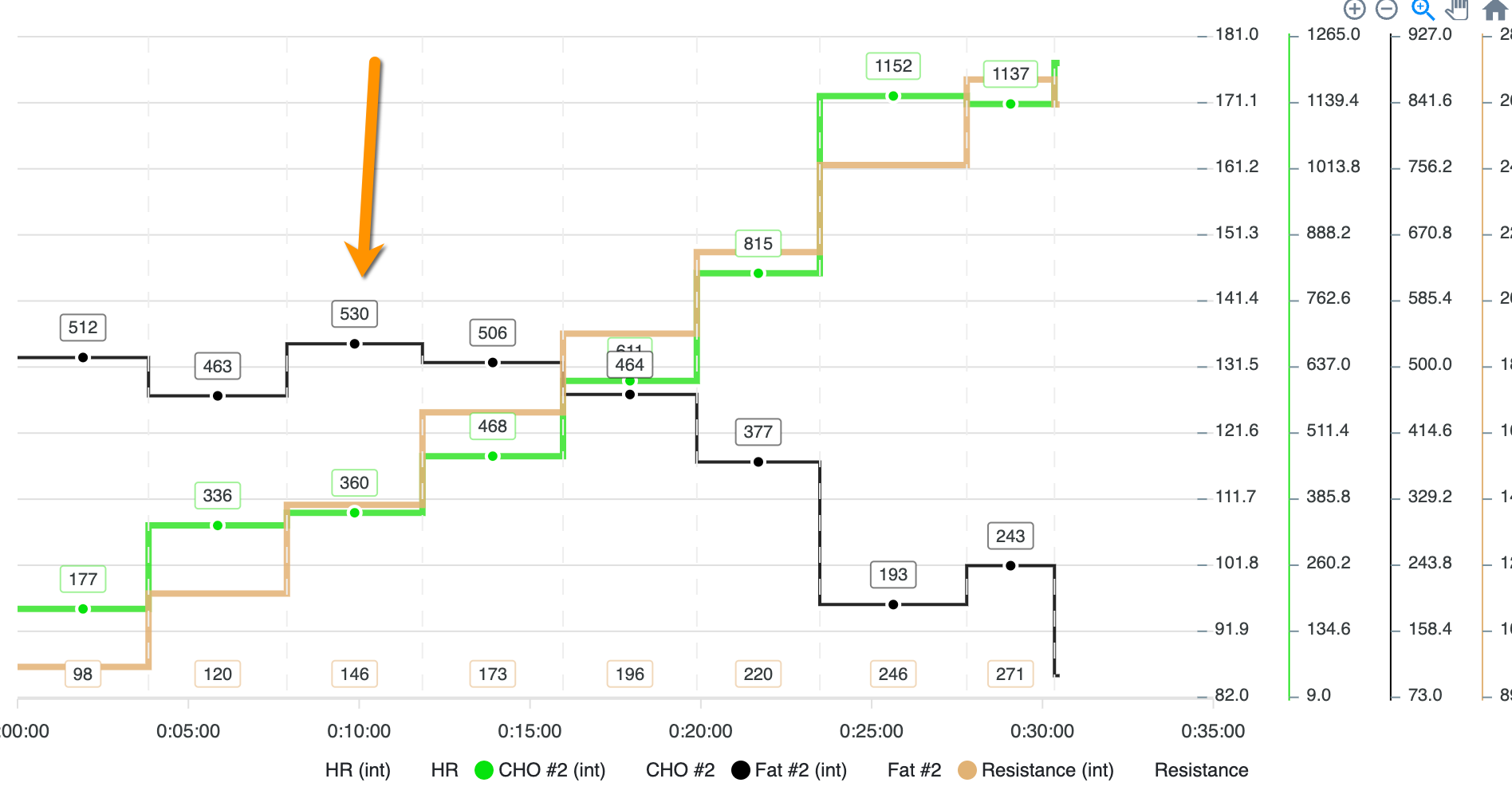
Comparing the two below.

Same protocol for both athletes.
If we look at the fatmax and crossover relative to map this is where the difference lies.
They would have different nutritional strategies (athlete one having a hard time fuelling long rides at endurance/tempo pace for sure, the other very different nutrition needs and much higher performance.
So to know fatmax improving, LT1 would move to the right.
So your fatmax could stay at 200w, but move crossover to the right, keeping map the same and you would likely be faster and improve in longer events.
Sorry for long answer hope I finally got to some points that make sense.
@steveneal Wow Steve, appreciate the comprehensive answer. Read it a couple times to digest it all!
Just to put it in simple man’s terms for myself - Fatmax may not change at all but what can change is the crossover point of fat:carb, and this will likely extend with improvements to LT1.
Sort of, I am not the best at explaining in writing will try a different way.
Lt 1 may stay the same but improvements can still come from the flattening of the curve after LT1.
Here is a graph of Fatox vs. CHO for an Ironman athlete from University of Loughborough, England. As you can see, you can make substantial changes to fat contribution to energy demand.
Ahh I see, you did say that in your previous post I just confused lower lactate measurements with meaning a shifting LT1 where it’s simply just a flattening of the curve.
Fat Max will always be tied very closely to LT1, but may not improve in everyone.
First this is how I define these metrics myself.
In the picture below, you will see ACTUAL fatmax is just after LT1.
I like to score fatmax as the highest amount of fat with the least amount of carbs, this spot is much easier to find in a test. You can not this by the sudden increase in carbs at fat max (keep in mind this is only during 4m of a step test, so in longer sessions, this is another reason I use the number I do).
You can also see that the lactate curve near LT1 and the Carb curve have an identical reaction.
So for me, fatmax is tied pretty closely to LT1.
How are you measuring this? A metabolic cart?
I find that fat rebound after the intensity quite interesting. I always assumed that once you’d crossed over it would be a long delay before your body would want to begin prioritising fat again but that graph shows only a 5 min rest at low intensity.
So, I’ve done tempo training for 6 weeks now. The week before I was kind of burnt out so I took an easy week. Today I retested. My eFTP according to WKO moved from 226 to 241 with tempo training.
I feel pretty happy with the results.
Steve, are you still working on this? Thanks!
Not yet other things keep popping up.
I will try.
Awesome! and yup!
Which event?
